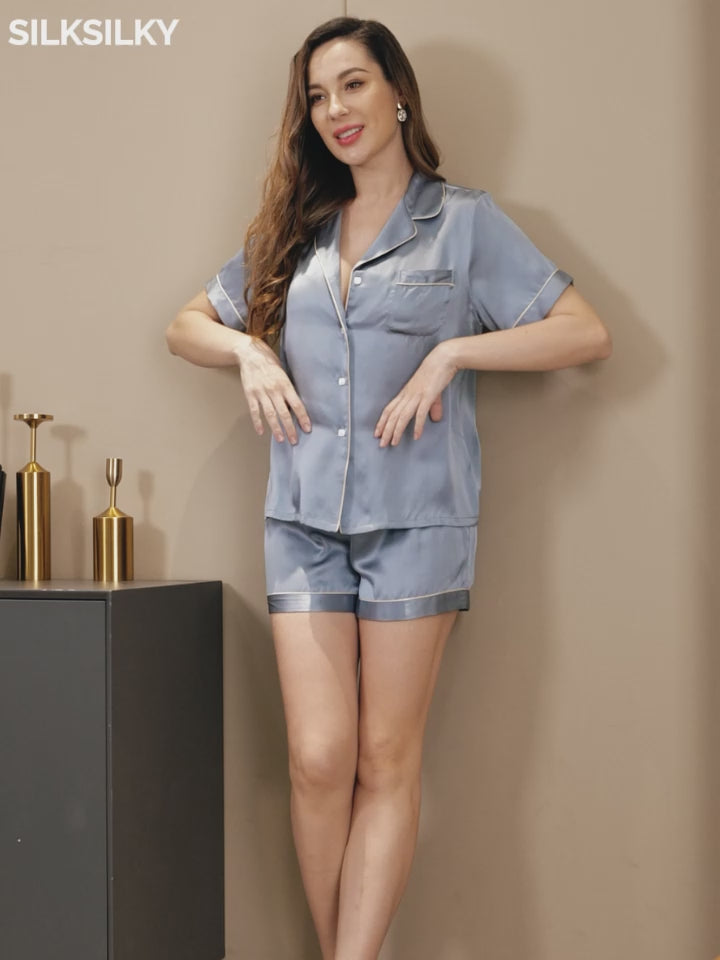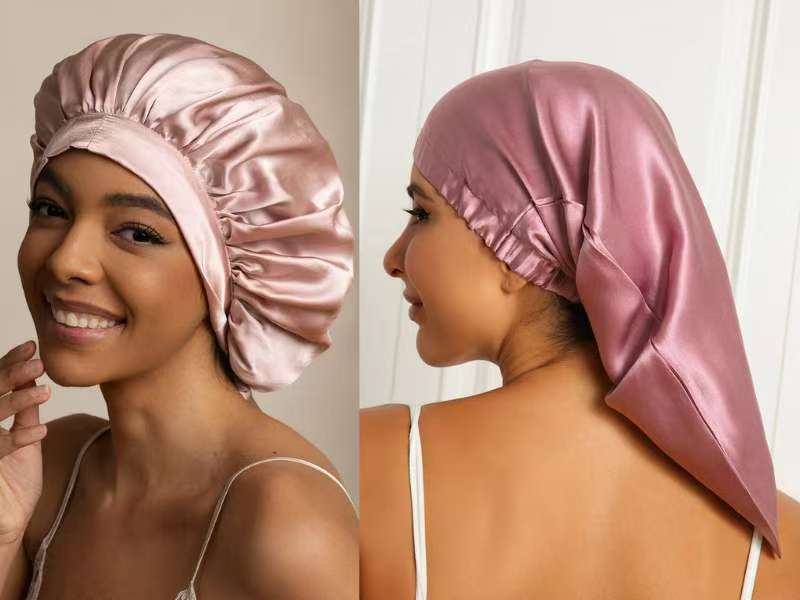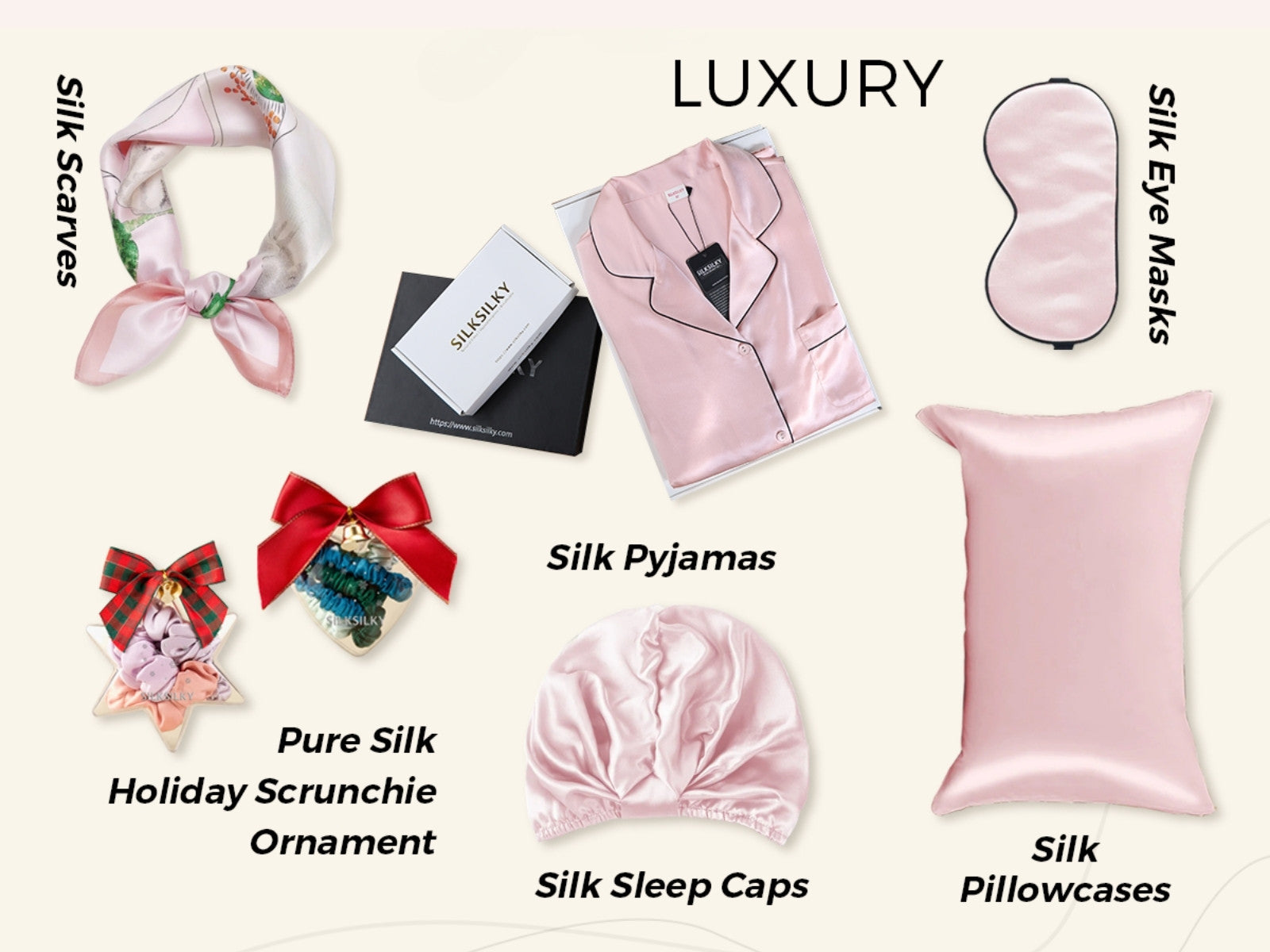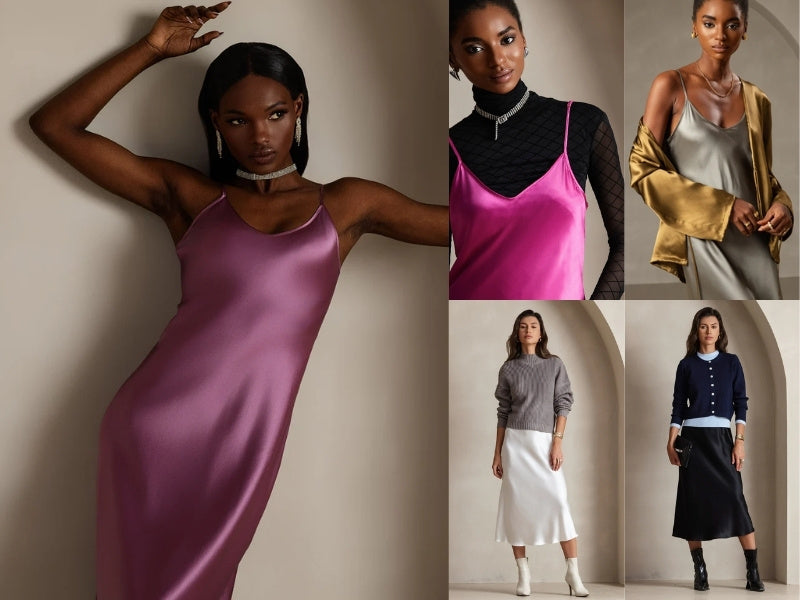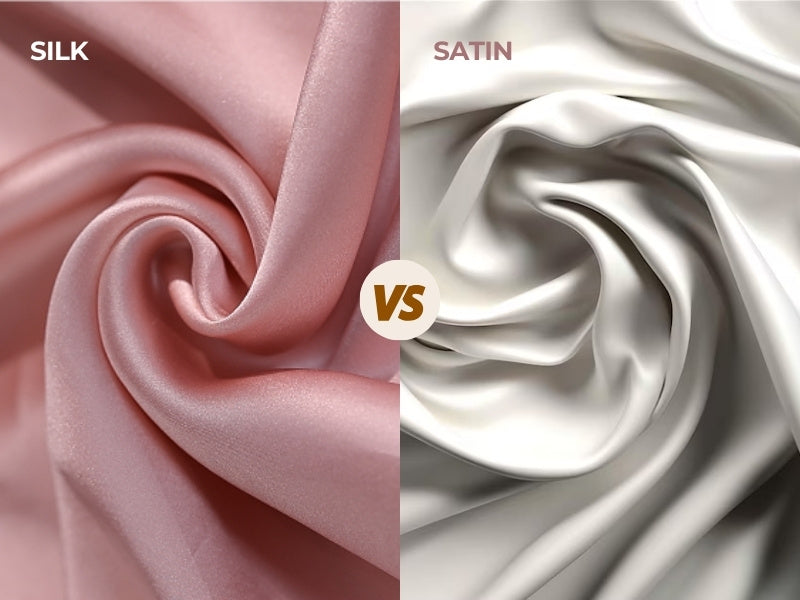How to Pick the Perfect Pillowcases: A Simple Guide for Every Sleeper
The pillowcases you sleep on can quietly shape your night—affecting your skin, your hair, and how cool or cozy you feel. Some fabrics breathe better, some feel softer, and others help with frizz or breakouts. The perfect pillowcases aren’t just about looks; they’re about comfort, care, and how well they match your sleep style. A few small choices can make a big difference.
Pillowcase Buying Checklist
If you're choosing pillowcases for better sleep or style, it's helpful to focus on just a few key points. Use the chart below to compare your options and pick what fits your needs best.
| Category | What to Look For |
| Fabric |
|
| Size |
Match the case to your pillow:
|
| Thread Count |
|
| Weave Type |
|
| Closure Style |
|
| Care Instructions |
|
| Style & Look | Match your bedroom decor with color, border (Oxford), or finish (matte, glossy, textured) |
Why Does the Right Pillowcase Matter?
A pillowcase is a small thing, but it can make a big difference in how well you sleep and how you'll feel when you wake up. If you've been waking up with breakouts, frizzy hair, or if you're hot and tossing and turning at night, your pillowcase could be partially responsible.
- It Helps You Sleep More Comfortably: Soft, breathable fabrics like cotton, bamboo, or silk reduce irritation and help you relax faster. A smooth finish keeps your pillow from getting too hot or too stiff, making it more comfortable for you to fall asleep.
- It Can Help with Cleaner Skin: A good pillowcase made of clean, breathable fabric helps to reduce clogged pores and skin irritation. Some fabrics like silk or bamboo are naturally hypoallergenic and resistant to dust and allergens, which can also help with acne or sensitive skin.
- It Reduces Hair Breakage and Frizz: Rough or scratchy fabrics have a tendency to pull on your hair as you turn and move during sleep. This can, over a period of time, lead to split ends or frizz. Smooth pillowcases like silk or satin reduce friction so that your hair can glide across the surface and be healthier in the morning.
- It Keeps Allergens at Bay: Pet dander, pollen, and dust mites can all collect in bedding, especially if the material traps moisture. Choosing tightly woven or hypoallergenic materials can keep irritants at bay and make breathing easier while you sleep.
- It Controls Your Temperature: Some fabrics trap heat, which makes for sweaty or tossing nights. Others draw moisture away and allow for airflow. Natural fibers like linen, bamboo, and percale cotton are cooler to the touch and are a better choice for hot sleepers.

What’s the Difference Between Pillowcase Fabrics?
Pillowcases come in many types of fabrics, and each one feels and performs differently. Some are soft and breathable, while others focus on beauty benefits or easy care.
Pillowcase Fabric Comparison Chart
| Fabric Type | Picture | Feel & Texture | Breathability | Care Needs | Best For |
| Cotton |
 |
Soft, smooth (varies by type) | High | Easy to wash and maintain | Everyday use, hot sleepers |
| Silk |
 |
Very smooth, luxurious | Moderate | Hand-wash or delicate cycle | Beauty benefits, sensitive skin/allergies |
| Satin (Synthetic) |
 |
Smooth, slippery | Low to moderate | Easy, machine-washable | Budget-friendly beauty care |
| Linen |
 |
Textured, softens over time | Very high | Machine wash; wrinkles easily | Hot sleepers, eco-conscious buyers |
| Bamboo |
 |
Soft, silky feel | High | Easy to wash; durable | Sensitive skin, hot climates |
| Microfiber/Polyester |
 |
Soft but less breathable | Low | Very easy, wrinkle-resistant | Budget shoppers, low-maintenance needs |
- Cotton: Cotton is soft, breathable, and easy to wash, which makes it a top choice. It stays cool, absorbs moisture, and lasts well. Premium types like Egyptian and Pima cotton feel smoother and softer, while regular blends are more affordable but slightly rougher.
- Silk: Silk feels luxurious and helps reduce hair breakage and skin creases. It’s also hypoallergenic, ideal for sensitive skin or allergies. It needs delicate care and costs more, but many find the beauty benefits worth it.
- Satin: Satin looks and feels similar to silk but is made from synthetic fibers. Many shoppers confuse these two smooth fabrics when making their selection. It's smooth, easy to care for, and helps reduce friction on skin and hair. It's more affordable than silk, though less breathable and durable..
- Linen: Linen is breathable, cooling, and great in hot or humid climates. It has a textured look and softens over time but may feel rough at first and wrinkles easily. It’s also eco-friendly and lasts with proper care.
- Bamboo: Bamboo pillowcases are silky, breathable, and moisture-wicking—great for hot sleepers. They’re naturally hypoallergenic, resist bacteria, and hold up well after washing. A solid pick for allergy-prone or sensitive skin.
- Microfiber or Polyester: These synthetic fabrics are soft, wrinkle-free, and low-maintenance. They’re great if you’re on a budget but don’t breathe as well as natural options and can trap heat. Good for everyday use if staying cool isn’t a top concern.
How to Choose the Right Pillowcase Size
A well-fitting pillowcase not only looks better but also helps you sleep more comfortably. If it’s too loose, the fabric bunches up. If it’s too tight, the pillow can feel stiff and awkward.
Standard, Queen, and King: What’s the Difference?
These are the most common pillow sizes.
- Standard pillowcases (about 20" x 26") fit most regular bed pillows.
- Queen pillowcases (about 20" x 30") offer a bit more length for slightly larger pillows.
- King pillowcases (about 20" x 36") are extra-long to match king-sized beds or sleepers who move a lot.
Make sure your case matches your pillow—not just your mattress—so it stays in place and looks neat.
What About Specialty Sizes?
Some pillows come in unique shapes or sizes:
- Body pillows are long and narrow, often used for side sleepers or pregnancy support (usually 20" x 54").
- Euro pillows are square (typically 26" x 26") and often used as backrests or décor.
- Boudoir pillows are small and decorative, usually around 12" x 16".
For these, always check the product label or measure your pillow to find the right cover match.
How to Measure Your Pillow for a Snug Fit
Use a tape measure to get the actual width and length of your pillow (not including fluff). Then compare those numbers to the pillowcase measurements listed on the package. A snug fit means the pillow fills out the case without gaps or overstuffing. Most cases are designed slightly larger to account for shrinkage and easy pillow insertion.
A pillowcase that fits well feels smoother under your head and helps your pillow stay supportive through the night. It also makes your bed look more polished, especially if you care about clean lines or layered bedding. Too much excess fabric can look sloppy or feel bulky, while too small a case strains the seams and shortens its lifespan.
What Should You Know About Thread Count and Weave?
What Is a Good Thread Count?
Thread count means how many threads are woven into one square inch of fabric. For cotton pillowcases, 300 to 500 is a good range. It feels soft, lasts longer, and lets air pass through. Less than 200 can feel rough. Anything over 600 often uses extra threads just to raise the number, and may feel thick or trap heat.
What Are the Main Weave Types?
- Percale: Feels crisp and cool, like hotel sheets. Best for hot sleepers.
- Sateen: Feels smooth and soft, with a little shine. Warmer than percale.
- Flannel: Soft and fuzzy. Good for cold weather or if you like extra warmth.
Is Higher Thread Count Always Better?
No. Some pillowcases use twisted threads to boost the number, but it doesn’t mean better quality. A well-made 400 thread count can feel better than a cheap 900 one. Pay more attention to how it feels and what it’s made of, not just the number on the package.
What Types of Pillowcase Closures and Styles Should You Know?
Pillowcases aren’t all the same—how they close and how they look can affect both comfort and appearance. Some styles are better for everyday use, while others are great for decorating your bed.
1. Envelope (Housewife): Great for Everyday Use
This style has a flap inside that holds the pillow securely without zippers or buttons. It’s simple, neat, and easy to take on and off. If you want a pillowcase that stays in place and looks tidy, envelope-style is a good go-to for daily use.

2. Oxford: Adds a Decorative Border
Oxford pillowcases have an extra fabric border around the edges, usually about 2 inches wide. They look more dressed up and are often used for styling the bed. Use them when you want your bedding to look more finished, especially in guest rooms or master bedrooms.
3. Zippered: Best for Slippery or Delicate Fabrics
A zipper closure keeps the pillow fully sealed inside the case. It’s ideal for silk or satin pillowcases, which tend to slide off the pillow. It’s also a good choice if you move a lot during sleep and want your pillow to stay put.

4. Shams: Mostly for Looks, Not Sleeping
Shams are meant for decoration. They often go on top of regular pillows and come with textured fabric or trims. While you can sleep on them, they’re mainly used to style the bed and are usually removed before bedtime.
What Pillowcase Works Best for Your Sleeping Style?
Not everyone sleeps the same way, so your pillowcase should match your personal needs. Some people sleep hot and need a cooler fabric, while others care more about skin sensitivity or beauty benefits.
- Hot Sleepers: If you often wake up sweating or kick off your blankets at night, you're likely a hot sleeper. Look for pillowcases made from linen, bamboo, or percale cotton. These fabrics let air flow through, pull moisture away from your skin, and feel cool to the touch. Stay away from thick or synthetic materials that trap heat.
- Sensitive Skin or Allergy Sufferers: If you have eczema, acne, or dust allergies, the wrong fabric can make things worse. Go with silk, bamboo, or high-quality cotton—all are gentle on the skin and naturally resist dust mites and bacteria. Wash your pillowcases often (every 2–3 days) to avoid buildup that can trigger reactions.
- Beauty Sleepers: If you want to reduce bedhead, split ends, or sleep lines on your face, choose silk or satin pillowcases. These smooth surfaces reduce friction while you sleep, helping hair glide and skin stay soft. They're especially helpful if you have curly hair, dry skin, or follow a nighttime skincare routine.
- Budget-Conscious Shoppers: If you’re looking to save money without giving up comfort, go for microfiber, polyester, or cotton blends. These materials are soft, easy to wash, and hold up well over time. Just know they may sleep a bit warmer than natural fabrics—so if you're heat-sensitive, try lightweight blends or look for cooling weaves.
Common Questions About Choosing the Perfect Pillowcases
Q1: How often should I change my pillowcases?
Changing pillowcases should be done 1 to 2 years from the initial date, depending on the material quality and how often they are washed. With usage over time, the fabric gets thinner, loses its color, or loses its softness even with proper care.
Q2: Are expensive pillowcases worth the investment?
They're worth it—if you're actually buying genuine silk or quality cotton, that is. Many retailers sell imitation products, so knowing how to spot authentic materials ensures you get what you pay for. Silk pillowcases are just great for your hair and skin, and they do feel that much smoother and cooler. And they really do last for a good while if you take care of them. If you just want something plain and nice, a good cheap pillowcase will be plenty. But if you want a little bit of extra comfort and beauty benefits, silk is well worth it.
Q3: What is the difference between a pillowcase and a pillow sham?
A pillowcase is to sleep on—it's comfy, washable, and easy. A pillow sham is usually for show. It has usually extra fabric on the sides and will likely use thicker or textured material that isn't used for regular sleeping.
Q4: Do pillowcases help with acne or frizzy hair?
Yes. Pillowcases made of bamboo and silk are less frizzy and oil-absorbing, making them better for frizz and acne. Using fresh pillowcases frequently and making use of smooth, breathable fabric can also prove to be helpful.
End Your Day Right with the Perfect Pillowcases
A good pillowcase can quietly elevate your entire bedtime routine. It clears up your skin, cleans your pillow, and makes your nights that much more relaxing. If you're shopping for sleep or style, it makes a difference. Start with what's most important to you, and let your pillow do more than just serve as a headrest.
![[Light Blue] SilkSilky Pure Silk Notch Collar Women's Pajamas 001,](http://silksilky.com/cdn/shop/files/ab83afb9301666ee2f174a8ae72ffda4_4e9bb488-7880-40fe-9e69-f0fd823857c5.jpg?v=1764653199&width=1200)
![[Light Blue] SilkSilky Pure Silk Notch Collar Women's Pajamas 002,](http://silksilky.com/cdn/shop/files/db8dbeee5354fe3b631b963715847ffe.jpg?v=1764653202&width=1200)
![[Dark Red] SilkSilky Pure Silk Notch Collar Women's Pajamas 001,](http://silksilky.com/cdn/shop/files/599ed0811e1a5fcfa55bdc80a0279704_2643c850-a793-4475-a52b-7fef1bbd7e36.jpg?v=1762233837&width=1200)
![[Dark Red] SilkSilky Pure Silk Notch Collar Women's Pajamas 002,](http://silksilky.com/cdn/shop/files/9e022d4dd4f99aed4af8da3f58fcfd5b_efb9bafe-3d71-4283-9b81-e339ff08f352.jpg?v=1762233837&width=1200)
![[White] SilkSilky Pure Silk V Neck Nightgown 001,](http://silksilky.com/cdn/shop/files/a8ae95260a57844b1e2e00c4fcfabdcc_b922b270-af10-4e96-9493-0d877bd663db.jpg?v=1764140639&width=1200)
![[White] SilkSilky Pure Silk V Neck Nightgown 002,](http://silksilky.com/cdn/shop/files/24ac506750f8c38c51bb5b6d0ee15287.jpg?v=1764140639&width=1200)
![[Pink] SilkSilky Pure Silk Sleep Cap 001,](http://silksilky.com/cdn/shop/files/SilkSilky_Pure_Silk_Sleep_Cap_Pink_001_C-250529006.jpg?v=1762221980&width=1200)
![[Pink] SilkSilky Pure Silk Sleep Cap 002,](http://silksilky.com/cdn/shop/files/SilkSilky_Pure_Silk_Sleep_Cap_Pink_002_C-250529006.jpg?v=1762221980&width=1200)
![[Steel Blue] SilkSilky Pure Silk Notch Collar Women's Pajamas 001,](http://silksilky.com/cdn/shop/files/05b358f92fb5d252122b00d69a2fcfc5_88211a42-88c4-4448-8cb3-5f18529bfef8.jpg?v=1762237226&width=1200)
